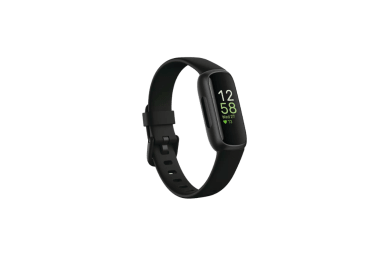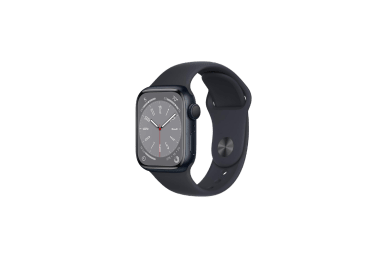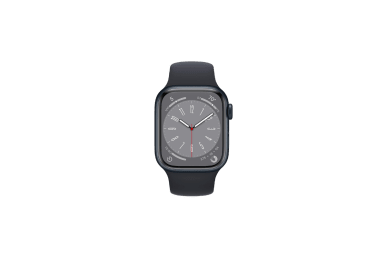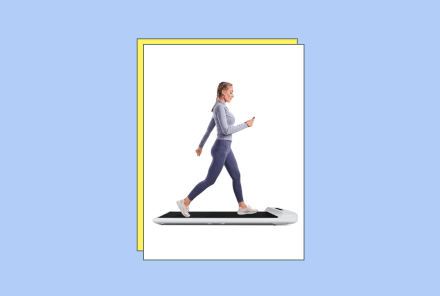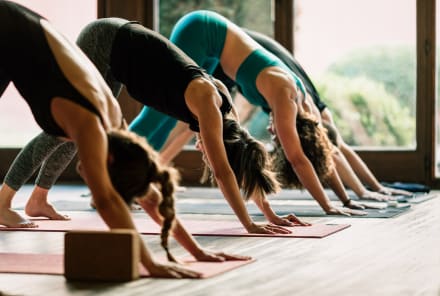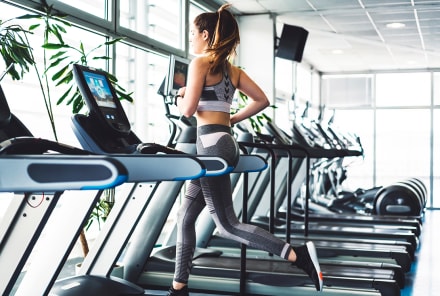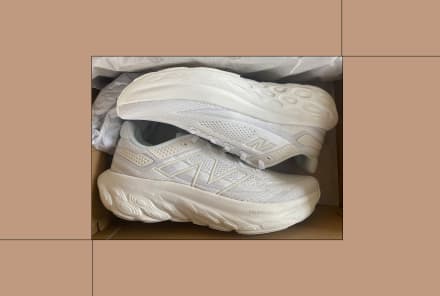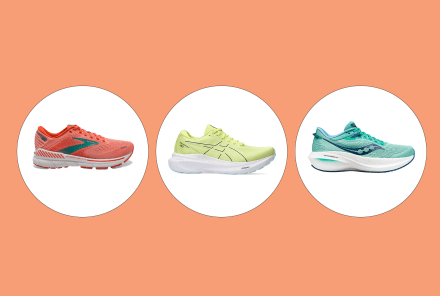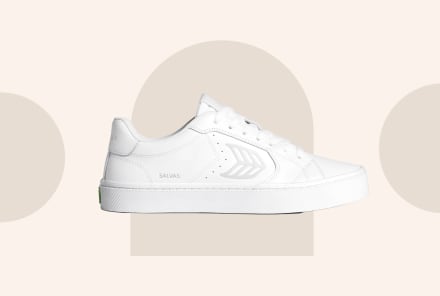Advertisement
The Best HRV Monitors Of 2024 To Accurately Monitor Your Heart Rate



The best HRV monitors accurately assess your heart rate variability throughout the day and night (no matter where you are) to help you improve your overall health and well-being.
A lower HRV has been linked with diabetes, cardiovascular disease, inflammation, obesity, and psychiatric disorders1, but increasing your HRV helps to calm down your body, minimize stress2, and improve sleep, digestion, concentration, and ultimately, your vitality. Sign us up for all of the above.
Today, there are trackers to monitor your heart while you sleep, work out, and anywhere in between.
To help you gain a better understanding of how aspects like diet, nutrition, exercise, and sleep are affecting your heart rate variability (and your body's performance), we hunted down the best HRV monitors on the market today.
We even tested a few of our own—so you can take your health into your own hands.
- Best HRV app:WHOOP
- Best for sleep: Oura Ring
- Best chest strap: Polar H10
- Best fitness watch: Garmin Forerunner 255
- Best activity monitor: Fitbit Inspire 3
- Best multi-purpose:Apple Watch Series 8
How we picked the best HRV monitors
To pick the best HRV monitors on the market, we conducted a comprehensive evaluation process. Our criteria included:
- Brand reputation: We focused on brands that are known for quality technology and reliable data. While it's always best to keep a discerning eye on your wearable tech, these brands are well known for making quality products. Many have been tested by us personally.
- Accessibility: Whether you prefer a deep dive into your data or a simple indicator of overall health, there's a tracker on this list for everyone.
- Price: Some trackers are simple one-time purchases, while others require monthly subscriptions for continuous data access. We selected HRV monitors at a range of price points.
- Purpose: We selected products to fit every lifestyle and preference in terms of where they're worn and what activities you can wear them for.
WHOOP has only been on the scene since 2015, but it's grown quickly in popularity with pro athletes and weekend workout warriors alike.
The newest model, the WHOOP 4.0, is a faceless, comfy knit band, with sensors that track data throughout your day and while you sleep.
All data is housed in the WHOOP app, which provides a daily score for sleep performance, recovery, and strain (or physical exertion), so you can tailor your activity accordingly.
Your HRV is monitored through the "Recovery" tab, along with a newer feature, the "Health Monitor," which identifies your typical heart rate, resting heart rate, heart rate variability, skin temperature, and blood oxygen levels.
Your wristband will even send alerts when you deviate from your standard levels.
A hands-on take from the tester
A hands-on take from the tester
"I wore the WHOOP 3.0 for about a year. I loved the intuitive platform and how much data there was to peruse every day. It also just looks cool and is really comfortable to wear. One thing that got in my way, though, was the psychological factor of the Strain and Recovery scores. I didn't love the few days that my mental state (I'm ready to work out!) didn't match what the app was telling me (you actually need to recover). I also don't love sleeping in wearable devices, which is key for getting the most accurate, robust data about your recovery. That being said, I love that the 4.0 is 33% smaller than the last model I wore—which was already pretty sleek!"
One of our all-time favorite sleep trackers, this little ring collects a ton of data through your finger and sends it to the corresponding app for you to view (with a paid membership).
You'll find HRV in the "Readiness" section of the Oura app, alongside insights like respiratory rate, body temperature, and resting heart rate.
The app gives you a "Readiness Score" each day, to measure how rested you are—so you can choose to tackle the day or take it easy.
Other features include automatic activity tracking for over 30 types of activity, menstrual cycle tracking through your body temperature, and a "Rest Mode" feature, which lets you opt out of tracking on days when you're sick or overly stressed (although this information can be helpful to know!).
A hands-on take from the tester
A hands-on take from the tester
"I tried out the Oura Ring a while back, and it's really impressive. The data, especially from sleep, is extremely thorough while still being user-friendly for the average human, like me. While the platform is really cool, I stopped wearing it because I'm a runner and I prefer a tracker with a face. I also have smaller hands (I'm 5'3") and the ring felt clunky—I might have gotten used to it if I committed to wearing it more, though."
While they're certainly the best fit for activity versus all-day use, research suggests that chest straps are the most accurate method of monitoring heart rate3.
The Polar H10 is one of the most reputable sensors, as it uses ECG (electrocardiogram) electrodes (the same method doctors use for ECG tests in hospitals) to measure the electrical activity of your heart.
The strap can be connected to your smartphone, broadcast to equipment through Bluetooth, and synced with your favorite fitness apps.
All metrics are viewable via the free corresponding app, and through the brand's smartwatch (sold separately). It also pairs with most other trackers, regardless of the brand.
With up to 400 hours of battery life, this strap gets great reviews from athletes of all levels for reliable data and a comfortable fit.
The only potential downside is that this strap is intended to be worn during activity versus 24/7, so you'll likely not want to wear it to work or sleep.
Garmin is one of the biggest names out there in activity tracking, and the brand is widely popular with athletes of all levels.
Its Forerunner series is a fan-favorite (especially among runners and triathletes) for the wide array of features the watch offers, including quality GPS tracking for a range of activities, AI-driven coaching, and an optional built-in music library.
While it is geared toward runners, you don't need to be training for a race to reap the benefits of this watch.
Additional noteworthy features include access to your calendar, phone notifications, and contactless payments.
With the Forerunner 255's "Morning Report," it's easy to get a view of your overnight HRV and recovery status on the watch itself (assuming you slept with it on) or by using the brand's free app (for a deeper dive).
It's also available in two different case sizes and a few different color options.
Hands-on take from the writer
Hands-on take from the writer
"I wear and run in the Forerunner 245, a slightly different model, and I really love it. It's a great tracker with solid battery life, reliable GPS, and an intuitive interface. Unfortunately, the 245 doesn't have the same HRV monitoring as the 255, so I can't speak to that feature. It's also a larger watch to sleep in for smaller folks (I don't sleep in mine)."
While it might not be suitable for advanced athletes, this smaller smartwatch is a great, less-expensive option and one that doesn't compromise on data measurement.
The Fitbit Inspire 3 has a smaller screen but still offers plenty of features, like GPS activity tracking, push notifications from your phone, and continuous heart rate monitoring.
The brand's app provides insight into your sleep performance, workout stats, and (of course) heart rate variability.
While these metrics are free, a premium membership ($10 per month) proves a more advanced wellness report, a daily "Readiness Score," community features, mindfulness meditations, and programmed workouts.
The latest iteration, the Series 8, is Apple's most tricked-out watch yet.
In addition to sleep and activity tracking, GPS, optional cellular service, and countless other features, it includes an ECG sensor that allows you to take an electrocardiogram reading of your heart.
While this is a cool feature for in-the-moment insights into your heart health, you'll need to tap into the (free) Apple Health app if you want to track HRV trends over time.
Other standout features of the Apple Watch Series 8 are fall detection, temperature & menstrual cycle tracking, and tons of options for customizing the look of your watch band and face.
What our editor says
What our editor says
"I use my Apple Watch Series 8 to encourage movement and track my exercise. The watch makes it super easy to go on runs without my phone, and I enjoy getting little pings on busy workdays reminding me to stand up and walk around."
—Emma Loewe, senior sustainability editor
Benefits of monitoring your HRV
HRV can be a helpful tool for understanding your overall readiness and adaptability.
"While you can measure your heart rate by using your fingers to measure your pulse, [unfortunately] you will not be able to measure your heart rate variability without a device that can clearly measure your electrical activity from your heart," Twyman says.
Below are a few key insights you can gain from keeping tabs on your heart rate variability:
- Athletic performance and overtraining: HRV has been long recommended as a tool to warn of overtraining and to optimize performance in athletes of all levels4. Some HRV monitors even send you notifications when you're pushing it too far, which can help prevent injury and stress.
- Sickness: A downward trend in HRV can signal that you're not getting adequate sleep or that your immune system is weakened. "A decrease in heart rate variability is sometimes an early warning sign that you are about to be sick," Twyman confirms.
- Stress: Research suggests that fleeting stressful moments, such as making time-sensitive decisions, public speaking, or test-taking, can significantly decrease HRV5. Monitoring your HRV gives you more awareness during these situations so you can properly seek out tools for coping with this acute stress.
"There are no dangers or significant downsides in measuring your heart rate variability," Twyman confirms. He does, however, note that your HRV is very personal, and it's best to always compare it to your baseline versus someone else's.
"Heart rate variability can be a good tool to help gauge your health—but just like any other tool, it has to be used cautiously," agrees Corrielus. "While there is no danger in monitoring HRV, the information has to be checked for accuracy, depending on the device's use (some are more reliable than others), and the information has to be put into the context of the full clinical picture."
If you have any concerns about your heart health or the data you're seeing from a wearable tracker, it's always best to consult your doctor.
A quick refresher: What is an HRV monitor?
Heart rate variability (HRV) is a metric used to determine our bodies' readiness and adaptability under stress, by measuring the amount of time between heartbeats—and understanding this metric might just be the key to enhanced exercise performance, better sleep, less stress2, and a longer, more resilient life.
HRV vs. HR
Let's break down what our HRV actually tells us. While your heart rate is measured by the number of times your heart beats per minute, your heart rate variability measures (in milliseconds) the time between your heartbeats.
Current research tells us that tracking HRV can help us understand how our nervous system affects our overall heart health6, especially about stress and physical activity.
Keep reading
Keep reading
"Heart rate variability is a measurement of the balance between the sympathetic and parasympathetic branches of your autonomic nervous system," explains board-certified cardiologist Michael Twyman, M.D. "Low heart rate variability is associated with increased stress and lower parasympathetic tone, while high heart rate variability is associated with decreased stress and higher parasympathetic tone."
Corrielus adds that your HRV can provide valuable insights into your overall health and well-being. "If your heart rate is highly variable, it indicates that your body is highly adaptable to where you are and what you are doing," he says. "People who are happy and less stressed have a higher heart rate variability. Similarly, those who are stressed and unsettled tend to have higher heart rate and a low heart rate variability."
If you're used to referencing higher heart rate as a sign of stress, the concept of high HRV as a good thing can be a bit confusing. Remember: High variability means you're highly adaptable or, in other words, ready to take on whatever life throws at you. Here are some tips for raising your HRV.
How to choose the best HRV monitor
Display: Consider how you prefer to read your data. Some HRV monitors have a display screen, while others collect data through sensors and send this info to be viewed on apps or various devices.
Activity & durability: Some trackers are simply more durable than others. For example, the Apple Watch has come a long way with its durability, but a cracked screen from a collision or high fall is still a big bummer. Ultimately, the best device for you will depend on what you're using it for. For example, if you're hoping to track your HRV through activities like swimming, you'll need something waterproof.
Where you'll wear it: Rings are easy to sleep with but might not be best for lifting weights. Watches are great for daytime use but could feel clunky to sleep with. Chest straps are great for exercise, but it's unlikely you'll want to wear one out and about all day (or to sleep, for that matter).
Cost: Consider how much you want to spend on your tracker and whether you'd prefer it be a one-time purchase or if you're willing to pay a subscription fee every month. Some devices (like WHOOP) require a monthly payment but have no upfront cost. Others (like the Fitbit Inspire 3) have a low upfront cost but still require a monthly payment to get the most data out of your device.
FAQ
What is the most accurate HRV monitor?
Research suggests that chest straps that use ECG electrodes are the most accurate way to monitor HRV from home. Most chest straps can be paired with other wearables, but they're meant more for tracking during exercise than for 24/7 wear.
Do any smart watches measure HRV?
Several smart watches measure HRV, but not all display this metric directly on the screen. Garmin's Forerunner 255 gives HRV insights on-screen through the "Morning Report" feature, while Apple Watch, WHOOP 4.0, and Fitbit's HRV data require going into the app.
What's the best continuous HRV monitor?
This is all up to preference and what you’re most comfortable in, but the Oura ring or WHOOP's 4.0 strap are likely the best way to monitor your HRV trends continuously, as they're less invasive than larger smart watches or chest straps.
The takeaway
A wearable HRV monitor is a great way to take a deeper look into your body's health trends.
Just remember, while these metrics help you manage your stress and athletic performance, they are extremely personal—if you're concerned at all about your data and heart health in general, connect with your doctor.
Optimizing your well-being is a holistic practice, so don't rule out natural techniques for managing stress and improving your mental health, such as meditation or a grounding yoga flow.
6 Sources
- https://www.ncbi.nlm.nih.gov/pmc/articles/PMC5882295/
- https://pubmed.ncbi.nlm.nih.gov/25924910/
- https://www.ncbi.nlm.nih.gov/pmc/articles/PMC7913967/
- https://pubmed.ncbi.nlm.nih.gov/12974657/
- https://www.sciencedirect.com/science/article/abs/pii/S1746809415000245?via%3Dihub
- https://www.ncbi.nlm.nih.gov/pmc/articles/PMC6141929/
Watch Next
Enjoy some of our favorite clips from classes
Enjoy some of our favorite clips from classes
What Is Meditation?
Mindfulness/Spirituality | Light Watkins
Box Breathing
Mindfulness/Spirituality | Gwen Dittmar
What Breathwork Can Address
Mindfulness/Spirituality | Gwen Dittmar
The 8 Limbs of Yoga - What is Asana?
Yoga | Caley Alyssa
Two Standing Postures to Open Up Tight Hips
Yoga | Caley Alyssa
How Plants Can Optimize Athletic Performance
Nutrition | Rich Roll
What to Eat Before a Workout
Nutrition | Rich Roll
How Ayurveda Helps Us Navigate Modern Life
Nutrition | Sahara Rose
Messages About Love & Relationships
Love & Relationships | Esther Perel
Love Languages
Love & Relationships | Esther Perel







